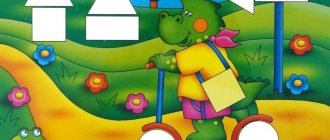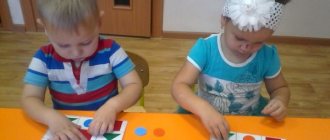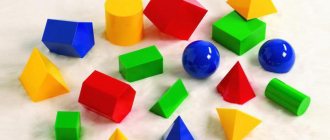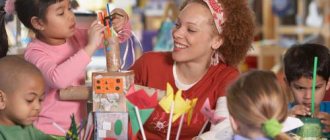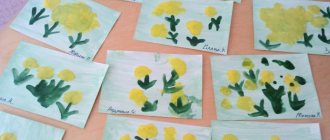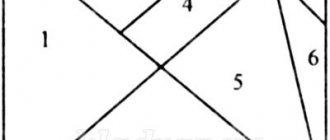Educational cards “Body Parts” » Women's World
- home
- Forum
- Help for newbies
- Pictures Avatars Paintings and pictures Postcards Smileys Patterns and ornaments Templates and stencils
- Administration
- Feedback
☰ Menu
- home
- Sections of the site Help for beginners
- Leisure Games and riddles Tests
- Wild fauna Pets Inhabitants of seas and rivers Nature Photo exhibition of living creatures Animal diseases Birds
- Horoscopes, numerology Mysticism, fortune telling, signs
- Fashion Hair. Hairstyles Beauty secrets Losing weight!
- Bakery. Dough Desserts Winter preparations Snacks and salads Meat Vegetables Fish Soups Drinks New Year's dishes Easter dishes Holiday dishes For the microwave For the multicooker
- About love Family and children Tips for parents
- Parables and fairy tales Stories and stories Russian language. Our speech Poems Quotes, aphorisms, proverbs
- Beads Waste material Bouquets and flowers Embroidery Knitting and weaving Ideas for the home Decoupage Children's crafts Kanzashi Piggy bank of creative ideas Dolls and toys Modeling New Year's crafts Easter crafts Paper crafts Brags Natural material Painting Sewing Costumes Homemade
- Country design Tips for summer residents Vegetables in the garden Indoor flowers Garden flowers Berries and fruits
- Computers and phones Beware of scammers Tips for the home Cooking tips Tips for all occasions Tips for drivers Tips for photographers Cleaning and washing
- Arts and crafts Unique places Interesting facts
- Anecdotes, tales, jokes Children say Funny pictures Humor in verse
- Signs
jenskiymir.com
I. General provisions
Before drawing the human body, you first need to sketch out the main volumes. Use circles and lines to outline gestures and body position. Never start detailing details from the head and then gradually work your way down. It is necessary to work with the entire figure, moving from rough shape to small details. This will help you see your body proportions clearly and prevent mistakes before you spend too much time on details and end up unable to change anything else.
For clarity, the three stages of drawing a body are shown below:
Body parts cards for children
Hello, dear readers! Today we invite you to download “Body Parts” cards for children. Most often, little children 4-5 years old are very interested in learning about the world around them while playing with adults, because they can tell so many interesting, new and unusual things!
We will be happy to help you teach your child body parts using colorful cards. They will ensure quick and easy memorization of new and unusual words, and bright and clear images of children will help in the development of visual memory.
After studying body parts in a playful way, the baby will have an idea of the structure of his body in the simplest and most understandable way. Such knowledge is also very important from a health point of view: the child will immediately be able to explain where and what is bothering him at home or in kindergarten.
You can study them in a large family circle with parents, brothers and sisters - in any environment where the baby will feel comfortable and cozy.
The cards can be perfectly supplemented with interesting games, songs and poems to further interest even the most active fidgets of any age. All you have to do is add a little fantasy and imagination, and the preschooler will understand that learning with the help of such pictures is very good and interesting, especially with parents or friends.
Did you like the article? Share with friends:
Loading…
dochkiisinochki.ru
II. Human body proportions
The unit of measurement of the human body is the head. In Western art, men are typically 8 heads tall, while women are slightly smaller at 7.5 heads. In reality, the human structure is usually closer to 7 heads, not to mention other types of structure, because the proportions can be very different.
However, the 8-head model (shown in the picture) is very useful for beginners because it makes the basic parts easy to remember:
- Head;
- Nipples;
- Navel and elbows;
- Perineum and wrists;
- Fingers and thighs;
- The lower part of the kneecaps;
- Lower part of the calf muscles;
- Soles of feet.
Female body structure
Below are the main differences between the male and female proportional body.
- The body consists of an oval, soft shape;
- The shoulders are narrower than the hips (the hip joints are outside the pelvic area);
- Elbows at waist level;
- Fingers mid-thigh;
- Legs taper inward from the hips (more pronounced taper than in men).
Male body structure
- The elbows are at waist level, but the man's waist looks much lower;
- Fingers mid-thigh;
- Legs taper inward from the hips (less pronounced taper);
- Men are generally taller than women;
- The body consists of a trapezoid, angular in shape;
- Shoulders are wider than hips (hip joints are inside the pelvic area).
III A little reminder
Here are some drawings
, with which you can remember the proportions. Visualization will help you when you come to scaling joints and limbs.
The level of the knee is equal to the level of the elbow, and the level of the toes is equal to the level of the heel.
From shoulder to buttocks. The shoulder is level with the knee, fingers start from the level of the buttock.
Heels never protrude beyond the line of the buttocks.
The palm of the hand reaches to the shoulder.
When the arm is bent, the size of the palm is placed from the wrist to the crook of the arm.
When the arm is extended, the size of the foot fits from the wrist to the elbow.
Body parts - cut-out pictures for children
Teaching your child to recognize body parts is certainly important. Moreover, if the baby is non-verbal, he should be able to explain that he has a headache or stomach ache.
When studying the structure of the body, you can use didactic pictures, toys, and show body parts of a mother or child. I propose adding to your arsenal a set of cut-out pictures “Body Parts”, which can be used like puzzles.
Download the file from the link below, print and paste the pictures onto cardboard. On the first sheet there are two images - a boy and a girl, they can be used as a sample. On the next two sheets there are parts of the body, they need to be cut out.
Make a boy or a girl out of cut pictures, using a sample picture, naming each part of the body - arm, head, stomach... You can ask the child to find a part of the body in the picture, then show where it is located in the doll, mother, in yourself: “Show me, where is your stomach? Where are the hands? What about your legs? Thus, the child will correlate the structure of his body with other people and develop associative thinking.
If the child cannot show parts of his body, work with imitation - perform actions, helping the child repeat them after you - “Raise your hands up”, “Show where the nose is”, etc. When the child learns to repeat your actions, you can give him similar tasks with verbal instructions.
Download file
obuchalka-dlya-detey.ru
